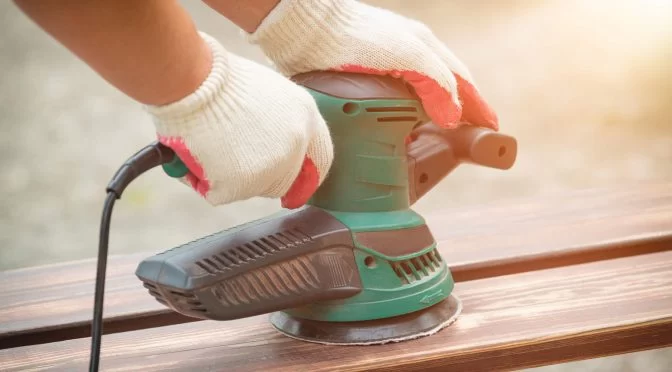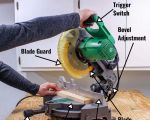
- Importance-of-Quality-Sanding-Tools
- Types-of-Sanding-Tools-and-Their-Uses
- Choosing-the-Right-Sanding-Tool-for-Wood-Refinishing
- Real-World-Examples-of-Effective-Sanding-Tools
- Where-to-Find-Top-Rated-Sanding-Tools
1. The Importance of Quality Sanding Tools in Wood Refinishing
Refinishing wood surfaces is an art that requires precision, patience, and the right tools. The foundation of any successful wood restoration project lies in the sanding process. Top-rated sanding tools for refinishing wood are essential because they ensure smooth surfaces, proper adhesion of stains or finishes, and an overall professional look. Using subpar sanding equipment can result in uneven finishes, visible scratches, or wasted effort that can damage the wood instead of restoring it.
Professional woodworkers and DIY enthusiasts alike agree that investing in reliable sanding tools pays off in the quality of the final product and the time saved. Beyond just sanding, these tools impact how well the finish coats bond with the wood, which determines durability and aesthetics.
2. Understanding Different Types of Sanding Tools and Their Uses
2.1 Orbital Sanders
Orbital sanders are some of the most popular tools for refinishing wood because of their versatility. They feature a round sanding pad that moves in small circles, which helps reduce swirl marks on delicate wood surfaces. These tools are great for intermediate sanding stages and provide a fine finish without aggressively removing too much material.
2.2 Belt Sanders
Belt sanders are more powerful and better suited for heavy-duty tasks, such as stripping old finishes or leveling uneven wood. They use a continuous loop of sandpaper that moves in a straight line, which makes them efficient for large flat surfaces. However, they require a careful hand to avoid gouging the wood, especially on softer species.
2.3 Detail Sanders
For tight corners, intricate moldings, and detailed woodwork, detail sanders come in handy. Their small triangular sanding pads can reach areas other sanders can’t, making them indispensable for furniture restoration or delicate refinishing tasks.
2.4 Hand Sanding
Despite the prevalence of power tools, hand sanding remains a vital technique, especially for finishing touches or delicate repairs. It allows for controlled pressure and attention to subtle imperfections that machines might miss.
3. How to Choose the Right Sanding Tool for Wood Refinishing Projects
3.1 Assess Your Project’s Scope
The size and condition of the wood surface will largely dictate the sanding tool needed. Large floors or tabletops might benefit from a belt sander’s power, while smaller furniture pieces or trim may be better suited to an orbital or detail sander.
3.2 Consider the Wood Type
Hardwoods like oak and maple require different sanding approaches compared to softwoods like pine. Hardwoods typically tolerate more aggressive sanding without damage, while softwoods need gentler tools to avoid deep scratches.
3.3 Evaluate Your Skill Level
Some sanding tools are more beginner-friendly than others. Orbital sanders, for example, are easier to control and less likely to cause accidental gouges than belt sanders. Hand sanding, although simple in concept, requires patience and technique.
3.4 Prioritize Ergonomics and Dust Control
Since sanding can be physically demanding and messy, tools with ergonomic grips and efficient dust collection systems improve comfort and cleanliness during the project.
4. Real-World Examples Demonstrating the Effectiveness of Top-Rated Sanding Tools
Consider the story of a vintage furniture restorer who transformed an old oak dining table using a combination of sanding tools. Starting with a belt sander to remove decades-old varnish, he switched to an orbital sander for smoothing out the surface, and finished with hand sanding to perfect the edges and details. The result was a beautifully restored piece that looked brand new while preserving the wood’s character.
Another example is a DIY enthusiast who tackled refinishing a hardwood floor. By selecting a top-rated drum sander paired with an orbital finishing sander, she achieved professional-level results without hiring costly contractors. Her careful tool choices and step-by-step sanding process minimized dust and maximized efficiency.
These cases illustrate how selecting the appropriate sanding tools can elevate a wood refinishing project, making the process more manageable and the results outstanding.
5. Where to Find the Best Sanding Tools for Refinishing Wood
Finding the right sanding tools can be overwhelming given the variety available on the market. For those looking to purchase top-rated sanding tools for refinishing wood, ToolNest is a valuable resource. The platform offers expert reviews, user feedback, and carefully curated selections of sanding equipment tailored to different project needs.
Whether you are a professional woodworker or a beginner looking to refine your skills, ToolNest helps connect you with the best tools, reliable sellers, and specialized services to ensure your wood refinishing projects succeed with ease and confidence.









